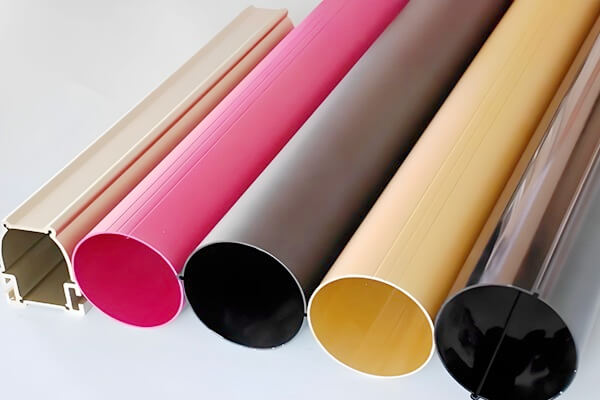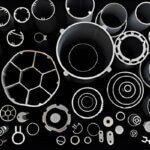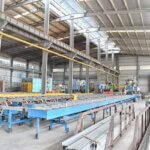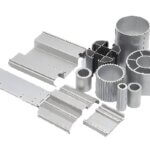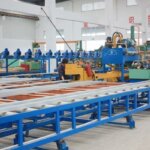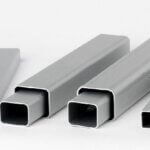Enhance Your Custom Aluminum Extrusions with These Finishes
Enhance Your Custom Aluminum Extrusions with These Finishes
Introduction
Custom aluminum extrusions are a staple in many industries, known for their lightweight strength and versatility.
However, the true potential of aluminum extrusions is unlocked through the application of various finishes.
These finishes not only enhance the appearance of the aluminum but also significantly improve its durability and performance.
This article explores the different types of finishes available for custom aluminum extrusions, highlighting their benefits and applications.
Understanding the Importance of Finishes in Aluminum Extrusions
Finishes play a crucial role in the functionality and aesthetics of aluminum extrusions.
By applying a finish, the aluminum is protected from environmental factors such as moisture, UV rays, and chemicals, which can cause corrosion and wear over time.
Finishes also provide a unique look and feel, making aluminum extrusions suitable for a wide range of applications from industrial to decorative purposes.
Overview of Custom Aluminum Extrusions
Custom aluminum extrusions are made by pushing aluminum through a die to create a specific cross-sectional shape.
This process allows for the production of complex and intricate designs tailored to meet specific requirements.
The versatility of aluminum extrusions makes them ideal for use in construction, automotive, electronics, and many other industries.
However, to ensure they meet the desired performance and aesthetic standards, appropriate finishes must be applied.
The Role of Finishes in Enhancing Durability
Aluminum, while naturally resistant to corrosion, can benefit greatly from additional protective coatings.
Finishes such as anodizing, powder coating, and electroplating add layers of protection that enhance the material’s resistance to wear, tear, and environmental damage.
This increased durability extends the lifespan of the aluminum extrusions, ensuring they maintain their structural integrity and appearance over time.
Types of Finishes for Custom Aluminum Extrusions
Powder Coating: A Versatile and Protective Option
Benefits of Powder Coating
Powder coating is a popular finishing method that involves applying a dry powder to the aluminum surface, which is then cured under heat to form a solid, durable coating.
The benefits of powder coating include exceptional resistance to chipping, scratching, and fading.
It also provides a uniform, high-quality finish that can be produced in a wide array of colors and textures.
Popular Applications of Powder Coating
Powder-coated aluminum extrusions are commonly used in architectural applications, such as window frames, door frames, and curtain walls.
They are also popular in the automotive industry for parts that require a high level of durability and aesthetic appeal, such as wheels and trim pieces.
Anodizing: Creating a Durable and Decorative Finish
What is Anodizing?
Anodizing is an electrochemical process that converts the aluminum surface into a durable, corrosion-resistant, anodic oxide finish.
This finish is integrated with the underlying aluminum, making it highly resistant to peeling and chipping.
Advantages of Anodizing for Aluminum Extrusions
The primary advantages of anodizing include enhanced corrosion resistance, increased surface hardness, and a variety of color options achieved through dyeing.
Anodized finishes are also environmentally friendly, as the process does not involve harmful chemicals.
Common Uses for Anodized Aluminum
Anodized aluminum extrusions are widely used in consumer electronics, architectural components, and home appliances.
The process is particularly favored for products that require a combination of durability and aesthetic appeal, such as smartphones, laptops, and kitchen appliances.
Electroplating: Adding a Layer of Protection and Style
How Electroplating Works
Electroplating involves coating the aluminum surface with a thin layer of another metal, such as nickel or chrome, using an electrical current.
This process enhances the appearance and corrosion resistance of the aluminum extrusion.
Benefits of Electroplating Aluminum Extrusions
Electroplating provides a high-gloss finish that can significantly improve the aesthetic appeal of aluminum extrusions.
It also enhances the material’s resistance to wear and corrosion, making it ideal for applications that require both durability and visual appeal.
Best Practices for Electroplated Aluminum
To achieve the best results with electroplating, it is essential to ensure the aluminum surface is thoroughly cleaned and pre-treated.
Proper maintenance, including regular cleaning and inspection, can help extend the life of the electroplated finish.
Painting: Achieving Custom Colors and Designs
Types of Paints Used on Aluminum
Various types of paints can be used on aluminum extrusions, including acrylics, polyurethanes, and epoxies.
Each type of paint offers different levels of durability, flexibility, and resistance to environmental factors.
Techniques for Painting Aluminum Extrusions
Painting aluminum extrusions involves several steps, including surface preparation, priming, and applying multiple coats of paint.
Advanced techniques, such as spray painting and electrostatic painting, can achieve a smooth, even finish.
Maintenance Tips for Painted Aluminum
To maintain the appearance of painted aluminum extrusions, regular cleaning with mild detergents and water is recommended.
Avoid using abrasive cleaners or tools that can damage the paint surface.
Brushed Finish: A Sleek and Modern Look
How to Achieve a Brushed Finish
A brushed finish is achieved by mechanically polishing the aluminum surface with abrasive materials to create fine lines that run in the same direction.
This finish gives the aluminum a sleek, modern look.
Applications for Brushed Aluminum Extrusions
Brushed aluminum extrusions are commonly used in architectural and interior design applications, such as kitchen cabinetry, furniture, and decorative panels.
The finish is also popular in consumer electronics for products like laptops and tablets.
Polishing: Creating a Mirror-Like Shine
Steps to Polish Aluminum Extrusions
Polishing aluminum involves using progressively finer abrasives to smooth the surface, followed by buffing with a polishing compound to achieve a mirror-like shine.
The process requires precision and attention to detail to avoid creating imperfections.
Where to Use Polished Aluminum
Polished aluminum extrusions are often used in decorative applications where a high-gloss finish is desired.
Common uses include automotive trim, jewelry, and high-end architectural elements.
Mechanical Finishes: Sandblasting and More
Overview of Mechanical Finishing Techniques
Mechanical finishes involve physically altering the surface of the aluminum through processes such as sandblasting, grinding, and tumbling.
These techniques can create various textures and finishes, from matte to rough surfaces.
Benefits and Uses of Sandblasted Aluminum
Sandblasting involves propelling abrasive materials at high speed against the aluminum surface to create a uniform matte finish.
This technique is ideal for removing surface imperfections and creating a non-reflective finish.
Sandblasted aluminum is often used in industrial and architectural applications where a durable, textured finish is desired.
Specialty Finishes: Unique Options for Custom Projects
Types of Specialty Finishes
Specialty finishes include unique options such as patina, antique, and textured finishes that add character and individuality to aluminum extrusions.
These finishes are often achieved through custom processes and treatments.
When to Choose Specialty Finishes
Specialty finishes are ideal for custom projects that require a distinctive look and feel.
They are often used in high-end architectural projects, bespoke furniture, and artistic installations where uniqueness and aesthetic appeal are paramount.
Choosing the Right Finish for Your Project
Factors to Consider When Selecting a Finish
When selecting a finish for custom aluminum extrusions, it is essential to consider factors such as environmental conditions, intended use, and aesthetic preferences.
Different finishes offer varying levels of protection and visual appeal, so choosing the right one can significantly impact the performance and longevity of the extrusions.
Environmental Considerations
The environment in which the aluminum extrusions will be used plays a critical role in determining the appropriate finish.
For example, anodizing provides excellent corrosion resistance in marine environments, while powder coating is ideal for areas with high UV exposure.
Intended Use and Aesthetic Preferences
The intended use of the aluminum extrusions should also influence the choice of finish.
For applications that require high durability and wear resistance, finishes like electroplating and powder coating are ideal.
For projects that prioritize aesthetic appeal, options like anodizing and specialty finishes may be more suitable.
Conclusion
Maximizing the potential of custom aluminum extrusions with the perfect finish requires careful consideration of the various options available.
Each finish offers unique benefits and applications, ensuring that the aluminum extrusions not only meet but exceed performance and aesthetic expectations.
By selecting the right finish, you can enhance the durability, functionality, and visual appeal of your custom aluminum extrusions, ultimately achieving the desired outcome for your project.

